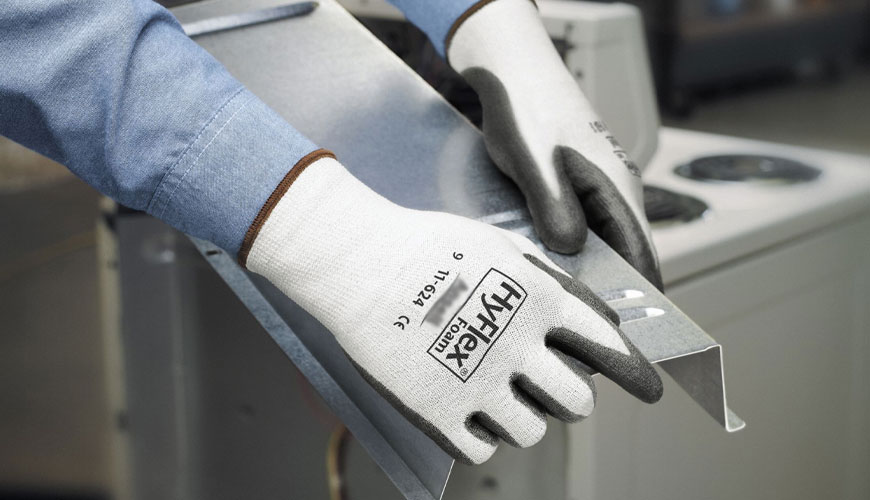

EUROLAB, with its state-of-the-art accredited laboratories and expert team, provides precise and fast testing services within the scope of EN ISO 13997 testing. The EN ISO 13997 Cut Resistance Test allows you to ensure that cut resistant personal protective equipment is fit for purpose.

Cut resistant fabrics come in many forms and for a variety of purposes, including clothing, shoes, gloves and even head protection. In most cases, any risk from serious cutting hazards should be removed from the business activity.
These minor cutting hazards often cannot be eliminated due to the nature of the job (for example, cutting operations that require the precision and dexterity of hand cutting). However, the potential damage that can be caused by cutting with a single blade is slightly less than with a circular saw or laser cutter, but it can still be deadly. The use of cut-resistant personal protective equipment (PPE) should therefore always be considered where there is a risk of cuts.
Most minor cuts occur on the hands, as these are the body parts closest to the operation that normally includes a sharp blade. Other parts of the body can often be protected by modifying the cutting practice or by the use of additional guards, but the hands (in most cases) are required to perform the cutting and therefore cannot be removed from the process.
Mechanical protection gloves are classified in EN 388. This is based on five characteristic protection elements: abrasion, cut, tear, puncture and impact resistance, each element divided into protection levels. Similar tests on fabrics used in other types of protective clothing are performed at minimum levels relative to the expected hazards.
For gloves, blade cut resistance is divided into five levels; level 5 is the most durable and level 0 provides the least protection. Traditionally, the level is based on the cut index gained by a test using a rotating blade pulled through fabric samples until shearing occurs. This is often referred to as the 'impact test'. However, where fabrics have high cut resistance, this test can produce abnormal results, often due to blunting of the test blade. In such cases, an alternative method specified in EN ISO 13997 is used.
The EN ISO 13997 method uses a straight blade that is pulled across a small piece of fabric until the cut occurs. The principle of this test is to vary the load that must be applied to the blade to facilitate cutting at a known distance. Compared to the impact test, the blade travels only a short distance, meaning that blade bluntness plays a much less important role.
EUROLAB assists manufacturers with EN ISO 13997 test compliance. Our test experts, with their professional working mission and principles, provide you, our manufacturers and suppliers, the best service and controlled testing process in our laboratories. Thanks to these services, businesses receive more effective, high-performance and quality testing services and provide safe, fast and uninterrupted service to their customers.
To get an appointment, to get more detailed information or to request an evaluation, you can ask us to fill in our form and reach you.